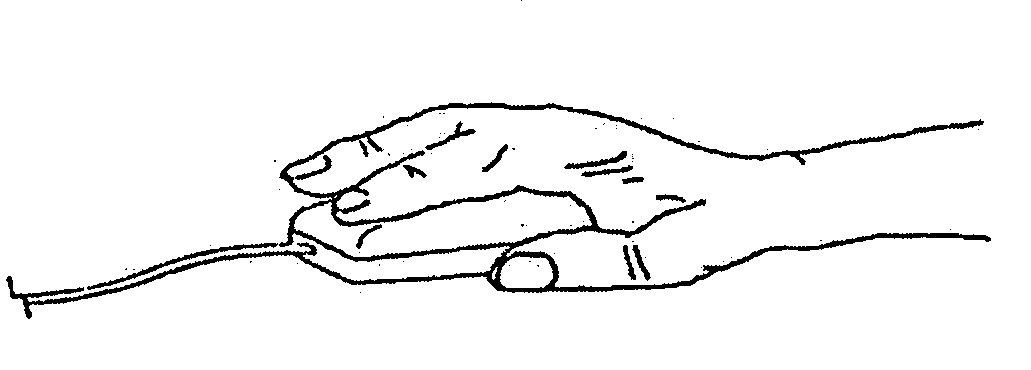Ergonomic Pointing Device
a pointing device and ergonomic technology, applied in the field of data input devices, can solve the problems of muscle strain, fatigue and stress, muscle strain, muscle strain, etc., and achieve the effect of reducing the gripping or pinching force and efficiently operating the buttons
- Summary
- Abstract
- Description
- Claims
- Application Information
AI Technical Summary
Benefits of technology
Problems solved by technology
Method used
Image
Examples
Embodiment Construction
[0080]Referring now to the several views Of the drawings, there is depicted a data input device in accordance with the present invention.
[0081]FIG. 1 depicts the hand in pronation, the forced position which is used with an ordinary mouse (FIG. 2). FIG. 3 is the hand in supination, the opposite of the position shown in FIGS. 1 and 2. FIG. 4 shows the band in flexion, with effort of the flexor muscle groups. FIG. 5 depicts effort of the extensor muscle groups when the hand is in extension. FIG. 6 depicts use of ah ordinary mouse with the hand extended.
[0082]FIG. 7a depicts the hand in the “physiological position” or “position of function.” The “position of function” is discussed in The Hand, (1985) Vol. II, Chapter 53, pp. 497-501, published by W. B. Saunders Company, the disclosure of which is hereby incorporated by reference as though fully set forth herein. The skeleton of the hand has a transverse and longitudinal (i.e., double) concavity, which gives it the shape of a cup with a ...
PUM
 Login to View More
Login to View More Abstract
Description
Claims
Application Information
 Login to View More
Login to View More - R&D
- Intellectual Property
- Life Sciences
- Materials
- Tech Scout
- Unparalleled Data Quality
- Higher Quality Content
- 60% Fewer Hallucinations
Browse by: Latest US Patents, China's latest patents, Technical Efficacy Thesaurus, Application Domain, Technology Topic, Popular Technical Reports.
© 2025 PatSnap. All rights reserved.Legal|Privacy policy|Modern Slavery Act Transparency Statement|Sitemap|About US| Contact US: help@patsnap.com



